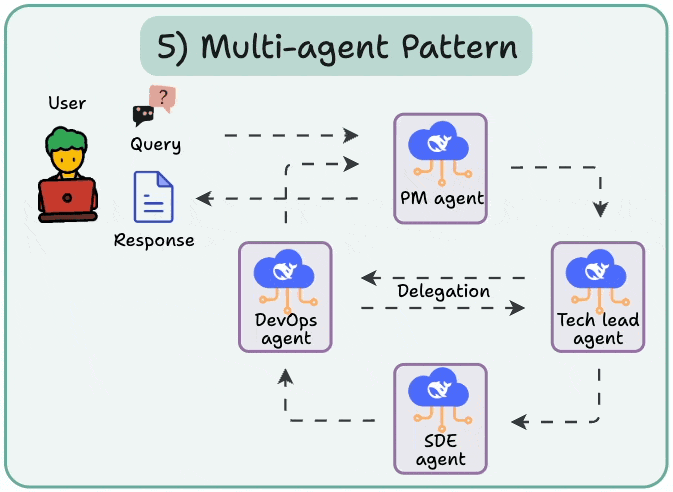Implement Multi-Agent Pattern from Scratch
...using pure Python and an LLM.
MindsDB: The MCP server all Agents need!
MindsDB lets you query any source—databases, warehouses, SaaS apps, social platforms—in plain English or SQL and get spot-on answers, fast.
A federated query engine that comes with a built-in MCP server.
Key features:
Federated query engine across 200+ data sources
Built-in MCP server for agent-ready access
Vector-powered knowledge bases with auto-embeddings
100% open-source & fully self-hostable
Check the GitHub repo here (don’t forget to star it) →
Thanks to MindsDB for partnering today!
Implement Multi-Agent Pattern from Scratch
We added another part to the Agents crash course, where we implemented the Multi-agent pattern from scratch (using just pure Python and an LLM).
Read here: Implementing Multi-agent Agentic Pattern From Scratch →
But what exactly is the Multi-agent pattern, and why does it matter?
Most tutorials stop at building a single agent that thinks and acts in isolation.
But in real-world use cases, you almost never want just one agent doing everything.
You want multiple agents, each with a specific role: a researcher, a summarizer, a checker, all passing context to one another like a team.
This is what the Multi-Agent pattern enables:
Specialized agents that focus on narrow subtasks
Dependency ordering, so agents run in the correct sequence
Context passing, so downstream agents build on upstream outputs
And a transparent execution pipeline, where every step is inspectable
This enhances the system’s ability to handle complex tasks and decisions by combining chain-of-thought reasoning with role and focus.
Thus, in this article, you will understand the entire process of building a multi-agent system from scratch using only Python and an LLM:
How the Multi-Agent pattern builds on top of ReAct and Planning
How to implement your own Agent, Tool, and Crew classes from scratch
How agents register automatically and declare dependencies
How the Crew resolves order and runs everything in a clean topological flow
How to construct ReAct-style prompts for tool-using agents
And we did all of this using just Python + an LLM backend (via LiteLLM).
Read here: Implementing Multi-agent Agentic Pattern From Scratch →
Thanks for reading!




